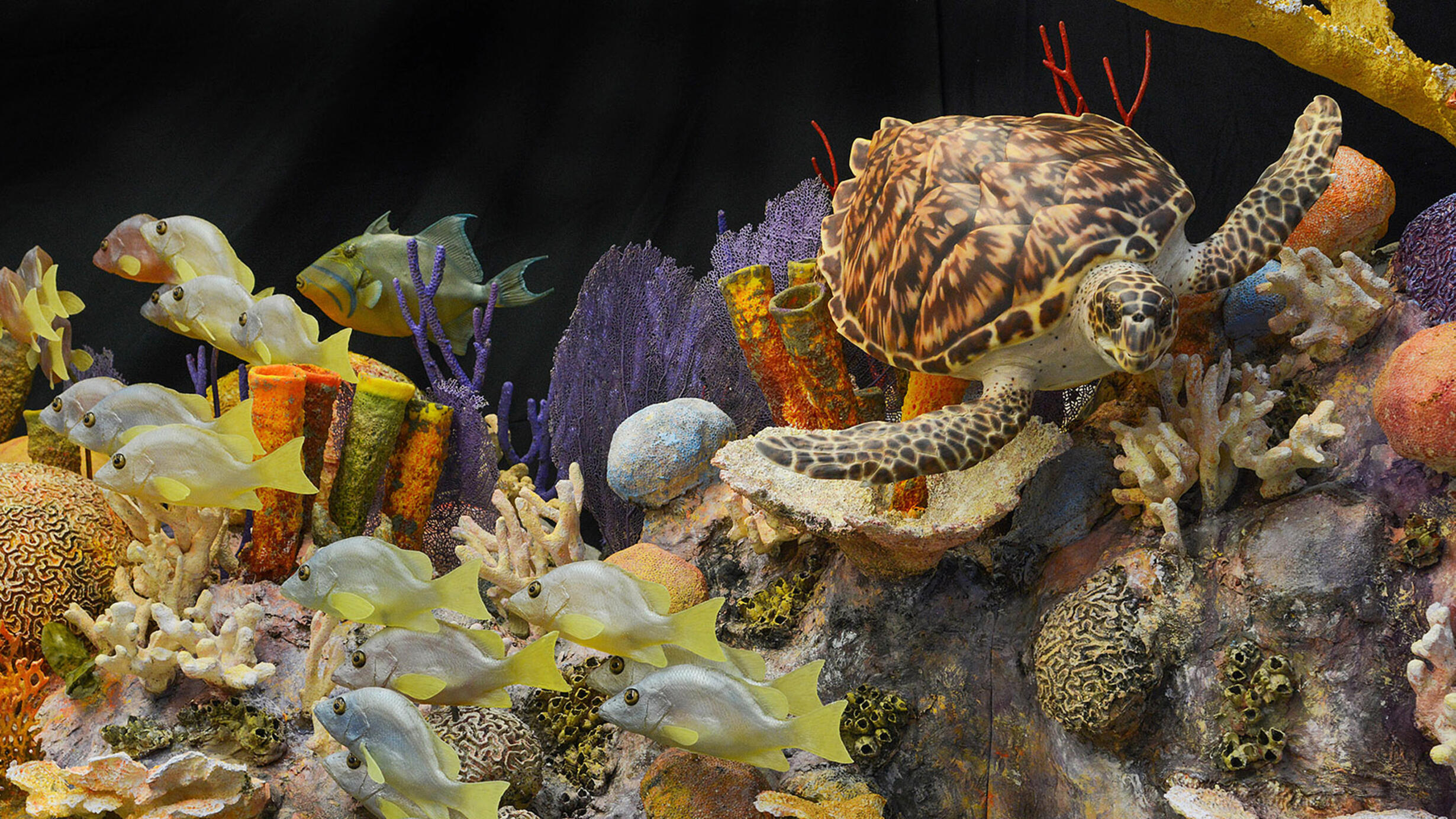Cuba's Coral Reefs
Part of the ¡Cuba! exhibition.
 Re-creation of a coral reef on display in the !Cuba! exhibit.
Re-creation of a coral reef on display in the !Cuba! exhibit.©AMNH/R. Mickens
Gardens of the Queen
Not far from the main island of Cuba, along a string of jewel-like keys called Gardens of the Queen, silvery fish zip past banks of coral studded with colorful starfish, sea fans, and sponges. To protect this vital diversity, Cuba has created the largest marine reserve in the Caribbean. Coral reefs are some of the richest ecosystems on Earth, and on many Caribbean coastlines, they are in danger of disappearing. But in this protected area in Cuba, the reef is wonderfully alive.
© G. Stoyle
On the Move
The lush life in the Gardens of the Queen reserve connects with life along other coasts. Sharks, spiny lobsters, and other reef dwellers in Cuba migrate, often feeding in Florida or even farther north. Adult corals don’t move, but their larvae do, and they may drift off to restock faraway reefs.
© The Discovery Channel/Mote Marine Laboratory & Aquarium
Between Land and Sea
This coral community in southern Cuba is just one part of a marine park that stretches nearly 840 square miles (2,170 square km) and includes more than 650 uninhabited islets and keys. The ecosystems on land and water are interdependent. For example, beaches, lagoons, mangrove thickets, and beds of sea grass serve as nurseries for many animals that live on the reef.
© B. Radvaner/AGE Fotostock
Undersea Treasure
The marine reserve at Gardens of the Queen protects one of the healthiest coral reefs in the Caribbean. Colorful crabs, scallops, and sea urchins interact among groves of elkhorn coral—a key reef builder that has dwindled on neighboring coasts. Large predators like sharks and groupers that have become scarce in other areas are abundant along this reef.
© C.A. Crumley/Alamy
Spectacular Shapes
Stony corals build branching shapes that form the foundation of coral reefs. These animals spend their adult lives attached to the seafloor and secrete a scaffolding of calcium carbonate as they grow. New colonies build on top of the old ones, creating a strong but porous structure many layers deep.
© P. Wolfgang/Alamy
Check out more of the exhibition—visit Cuba's Humboldt National Park.
Top photo: ©AMNH/R. Mickens